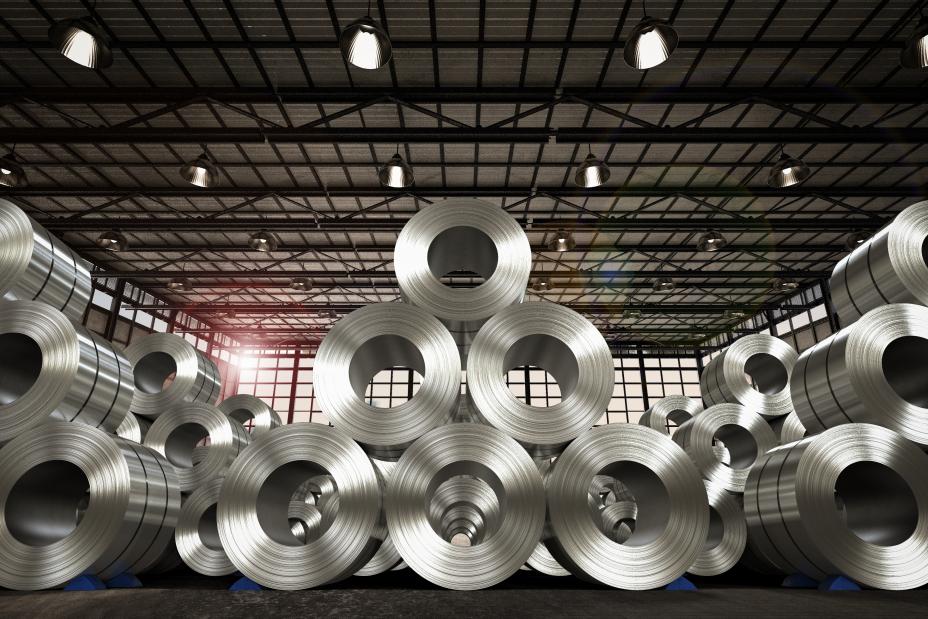Ferrous Metals: Material-Specific Data
By weight, ferrous metals (iron and steel) are the largest category of metals in municipal solid waste (MSW). The largest sources of ferrous metals in MSW are found in durable goods such as appliances, furniture and tires. Containers and packaging are the other source of ferrous metals in MSW. Large quantities of ferrous metals are found in construction materials and in transportation parts and products such as automobiles, locomotives and ships, but these are not counted as MSW in this analysis.
This web page is a brief summary of ferrous metals materials-specific data. For more comprehensive information, see the 2018 Data Tables on the Advancing Sustainable Materials Management: Facts and Figures Report page.
On this page:
Overview
 EPA measures the generation, recycling, composting, combustion with energy recovery and landfilling of ferrous metals in MSW.
EPA measures the generation, recycling, composting, combustion with energy recovery and landfilling of ferrous metals in MSW.
EPA used industry data, including statistics from the Steel Recycling Institute, to estimate ferrous metal generation. The generation of ferrous metals was 19.2 million tons in 2018 (6.6 percent of total MSW generation). EPA examined the recycling of ferrous metals by various product categories. The recycling rate of all materials in appliances, including ferrous metals, was 59.8 percent. Overall, the Agency estimated the recycling of ferrous metals from durable goods (large and small appliances, furniture, and tires) to be 27.8 percent (4.7 million tons) in 2018.
EPA estimated the recycling rate for steel cans to be 70.9 percent (1.1 million tons) in 2018. Additionally, the analysis found the recycling of approximately 510,000 tons of other steel packaging that year, including strapping, crowns and drums. The recycling of ferrous metals included material collected through recycling programs, as well as metal collected at combustion facilities. The total amount of MSW ferrous metals combusted in 2018 was 2.3 million tons. This was 6.7 percent of all MSW combusted with energy recovery that year.
In 2018, landfills received 10.5 million tons of steel. This was 7.2 percent of all MSW landfilled.
Please see the EPA Methodology Document for information on estimating the generation and management of ferrous metals.
Summary Table and Graph
The data below are from 1960 to 2018, relating to the total number of tons of ferrous metals generated, recycled, composted, combusted with energy recovery and landfilled.
| Management Pathway | 1960 | 1970 | 1980 | 1990 | 2000 | 2005 | 2010 | 2015 | 2017 | 2018 |
|---|---|---|---|---|---|---|---|---|---|---|
| Generation | 10,300 | 12,360 | 12,620 | 12,640 | 14,150 | 15,210 | 16,920 | 18,190 | 18,890 | 19,200 |
| Recycled | 50 | 150 | 370 | 2,230 | 4,680 | 5,020 | 5,800 | 6,070 | 6,170 | 6,360 |
| Composted | - | - | - | - | - | - | - | - | - | - |
| Combustion with Energy Recovery | - | 60 | 250 | 1,690 | 1,610 | 1,640 | 1,810 | 2,150 | 2,290 | 2,310 |
| Landfilled | 10,250 | 12,150 | 12,000 | 8,720 | 7,860 | 8,550 | 9,310 | 9,970 | 10,430 | 10,530 |
Source: Ferrous packaging generation and recycling information, along with ferrous recycling in appliances, is from the Steel Recycling Institute.
A dash in the table means that data is not available.
